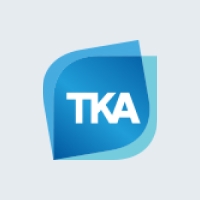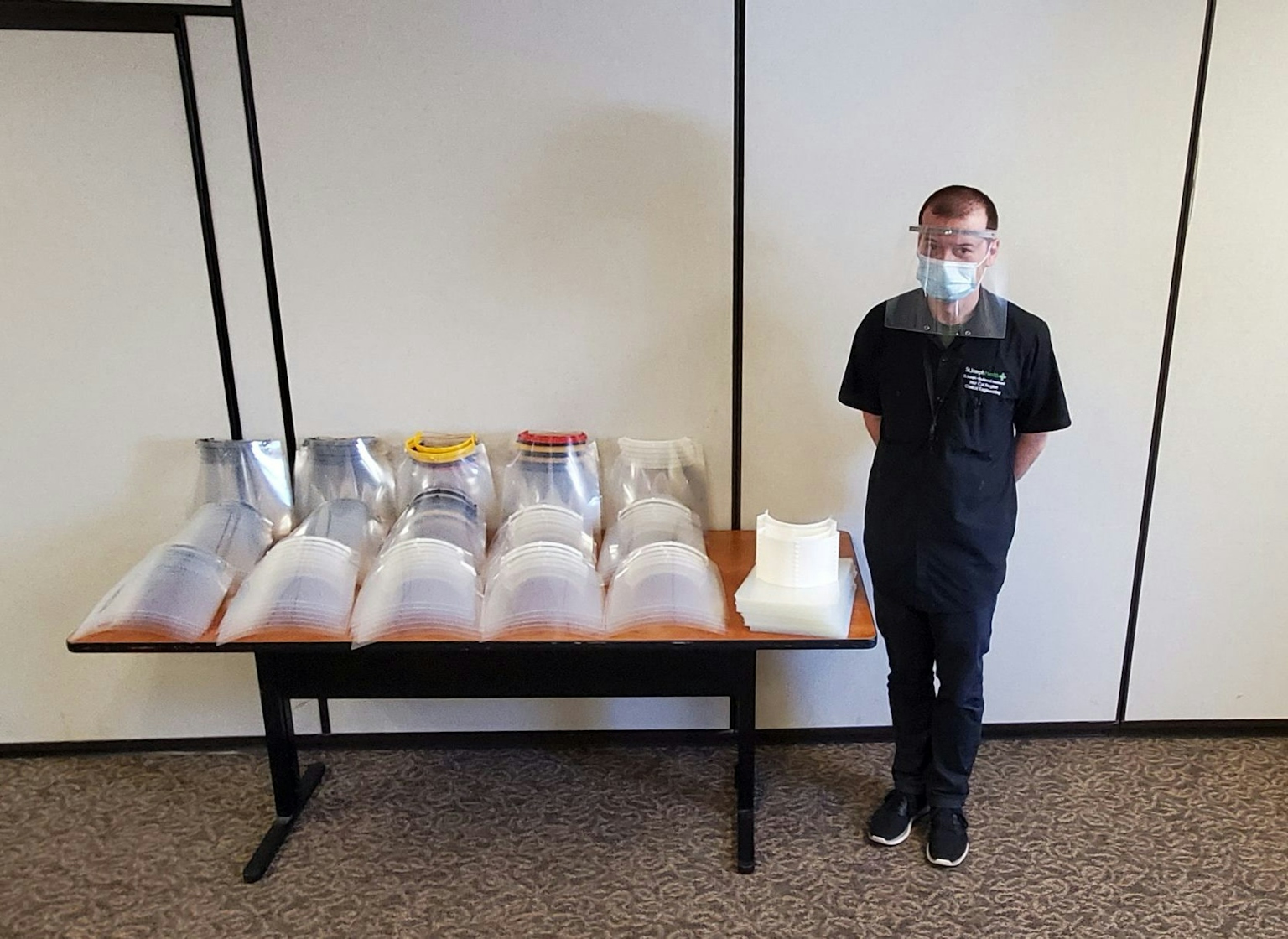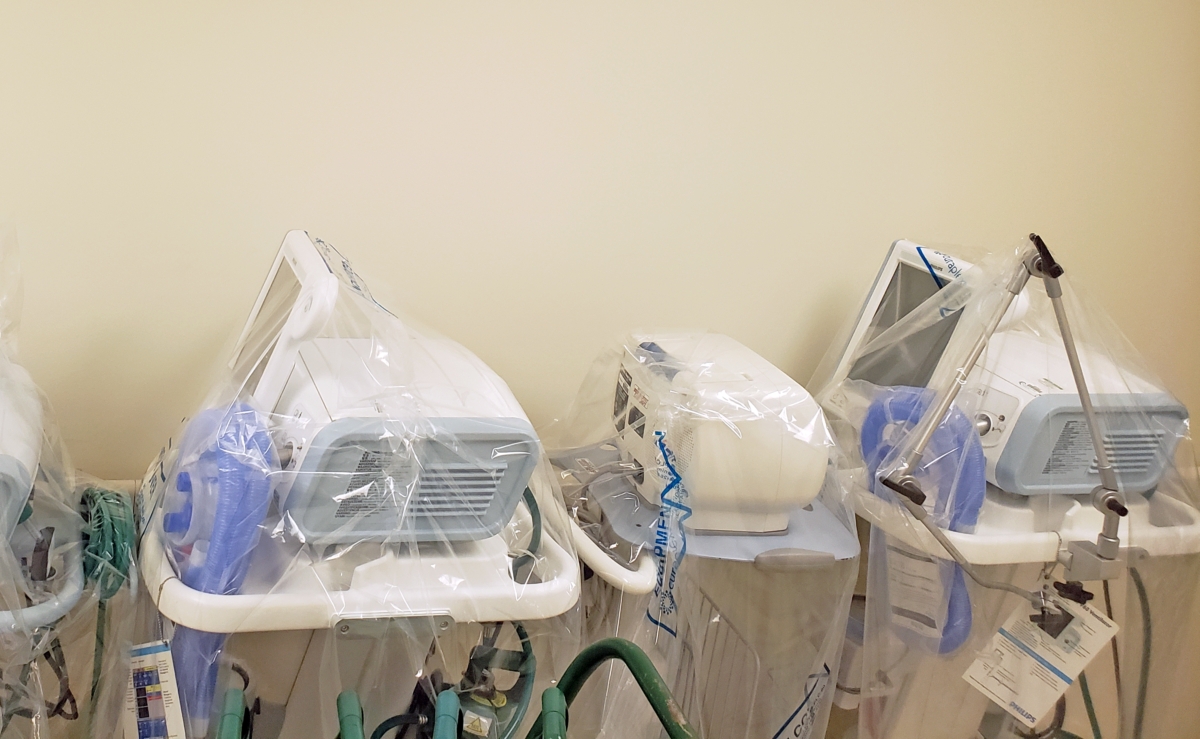At their core, biomeds are problem-solvers.
And as the reach of the novel coronavirus (COVID-19) spreads, a major issue surfacing worldwide is medical provider safety and the shortage of Personal Protective Equipment (PPE) due to intensified demand.
But by marrying ingenuity and modern technology, a team of TKA biomeds found an efficient solution to produce safe face masks for St. Joseph Health, whose two community hospitals serve Humbolt County in California’s North Coast.
In 2018, our Healthcare Technology Management team purchased a 3D printer, with the intent to create specialty parts, as needed, for repairing medical devices. “We were seeing a deficit with face shields, so we decided to see if we could make our own,” said Jeremy Westkamper, TKA biomed director. His colleague, John Hudson, an imagining specialist, partnered with him to kick off the project. Both agreed it was a natural fit that aligned with TKA’s mission to be a smart partner and ensured that hospital partners would have clean, reliable equipment at the ready for life-saving patient care.
When Jeremy and John were initially looking into the concept of 3D printing, cleanliness was an important consideration, given its medical application. The printer uses a spool of ABS plastic filament to create an item, and, based on their HTM experience, they knew those products could be safely cleaned of germs and other contaminants.
COVID-19 and the worldwide shortage of masks hit some 24 months into their successful usage of the printer – and being problem solvers, the evolution to use the printer for PPE production was a logical next step. Initial product research led them to a face shield design circulated by the University of California San Francisco (UCSF), which offered specifications for 3D printing a visor. A clear shield is snapped on to protect providers’ eyes and the rest of their faces, particularly when they’re intubating a patient who might cough and expectorate virus particles. The shield is secured in back with elastic bands.
Putting the 3D printer at St. Joseph Hospital to the test, they quickly learned the UCSF design wasn’t optimally matched for their equipment. Hudson re-engineered and streamlined the design, allowing TKA to print faster and even produce multiple visors at the same time. Additionally, they programmed the printer to produce 20 at a time, with a batch started at the beginning of a shift and another at the end of shift to allow the machine to print overnight. “At night, when we’re not here, we can still keep printing,” Jeremy says.
The next problem to tackle was to identify a sturdy clear plastic material that could hold up to disinfection standards. “I wanted to find something a little more robust,” Jeremy says. At FedEx, he found a clear heavy laminating material, which he describes as a transparent card stock. Most importantly, it could be cleaned with hydrogen peroxide.
With a three-hole punch and a rubber band, we finally have a fully functioning face shield for a hospital, - Jeremy says.
TKA partnered with the hospital to have providers in the Intensive Care Unit, Emergency Department and Surgery try out the design and offer feedback, getting great feedback for comfort and reusability. The team also presented the design and detailed the cleaning process with the hospital Infection Prevention unit, which readily reviewed and endorsed the in-house solution.
TKA now has the inventory to produce up to 1,200 face masks, with discounts from partners supplying components. In addition to supplying St. Joseph and Redwood Memorial Hospital, TKA is providing free face shields to local health groups, including a community testing center.
Their efforts caught the attention of KVIQ, the CBS affiliate in Eureka, which ran a story on the 3D production.
The ideas keep flowing
The innovation didn’t stop there. When an overlooked supply of CAPR masks was uncovered, the joy of the discovery was quickly overshadowed by their condition. Many of the clips that hold in the mask’s fans were broken. Additionally, its specialty batteries, which should be replaced every couple of years, hadn’t been touched in five years.
In collaboration with fellow TKA biomeds John Hudson, Chris Cagle, Russell Edson and Jim Wasetis, the 3D printer was soon programmed to produce new clips, and the team brainstormed and found a way to rebuild the batteries. “This is not new to our way of thinking,” Jeremy says. “We need to know how things work, and we know how to modify things when we have to fit the need.”
Then, in online conversations with the larger biomed community, Jeremy connected with a local school nurse who purchased a medical-grade 3D printer. Their partnership led to producing a new set of adaptors that enable medical providers to convert non-invasive ventilators to invasive ventilators, which also have had high demand.
“It’s exciting,” Jeremy says, “that if there’s a need, we can make things happen.”
Pay it forward with your ideas
How are your companies applying innovative thinking to solve emerging problems during the novel coronavirus pandemic? Share your ideas in the comments or email us at info@ii-techknow.com.



